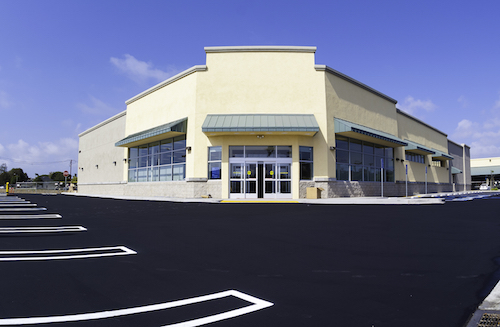Consumer spending dominates the U.S. economy, and makes retail properties an intriguing investment option.
Retail properties make up a significant portion of the commercial real estate (CRE) market. Here are some revealing statistics:
- There are an estimated 6 billion square feet of total leasable retail area in North America alone.
- Consumer spending made up nearly 70% of the U.S. economy (as measured by GDP) in 2013.
- While it’s true that in some industries online shopping has replaced brick-and-mortar stores, many online retailers of both products and services have expanded their physical presence (for example, Home Depot). This is partially due to the fact that the beneficial tax treatment enjoyed by online retailers has ended, but more importantly, shoppers often need to see and touch products before buying them.
- Over the last 20 years, CRE has returned about 9.5 percent annually, better than the S&P 500.
It seems likely that retail real estate will continue to play a large role in CRE. The retail sector encompasses a variety of properties, from those found in neighborhood shopping centers (pharmacies, grocery stores, restaurants, cell-phone carriers) to mega-malls, such as those that offer shopping and entertainment opportunities, drawing consumers from a wide range of surrounding areas. You can also find many examples of outlet malls, specialty or fashion malls, big-box stores, and city streets clogged with both mom-and-pop stores as well as famous chains, all of which are retail properties.
Many Benefits of Investing in Retail Properties
Special economic factors shift some of the risk associated with retail property investment, from landlords to tenants. For example, a popular instrument used in retail is the triple net lease, in which the tenant is responsible for payments of real estate taxes, common area maintenance and insurance, either on a pro-rata basis or in full. Another factor which favors investment in smaller properties within larger malls is the anchor effect. When a popular store, such as a Nordstrom, Walgreens, Home Depot or Target anchors a shopping center, other tenants are willing to bid up rents because of the extra shopping traffic they’ll receive due to the proximity of the anchor properties.
Another popular arrangement is percentage rent that is based on the sales volume of the retail store. In effect, the better a store does, the more rent you collect. This has the beneficial effect of aligning the interests of lessor and lessee. These deals are often structured with a base rent (that is, in any case, profitable for the investor) plus a percentage of sales above a set threshold. This percentage may or may not be capped. The benefit to investors is obvious.
It is hardly unusual for newly established retail stores or chains to sign up for long leases. Here’s why: new stores may need extensive improvements, customizations and decorating. These are startup costs borne by the tenant, who is going to want to amortize those costs over an extended period. It doesn’t make sense for a tenant to sink a lot of money into leasehold improvements only to move out in a year or two. Long leases are good for investors because it cuts down on vacancy times and often can lock in a higher or escalating rent structure. Renewal options should be carefully structured so that investors continue to make their required returns on the property.

More Reasons
There are a variety of additional incentives for investing in retail real estate, including:
- Cyclicality. The CRE market in general is picking up speed right now, and most real estate booms last for cycles up to 15 years, sometime longer. The earlier you get into a real estate cycle, the bigger ROI you can expect.
- Diversification. If you want to diversify your property portfolio, an efficient way to do so is by investing in a mall or shopping center. One investment is supported by multiple streams of income from many tenants. Even if the occasional tenant goes under, the portfolio is minimally affected and you are not dependent on the performance of a single tenant. Furthermore, this kind of investment allows you to diversify across industries. Even if one sector is in a downturn, tenants operating in other sectors may escape any problems and your income streams can continue pretty much intact.
- Passive Income Opportunities. When you purchase a share of a retail property through a real estate crowdfunding platform, your investment is totally passive. You won’t be answering irate phone calls from tenants whenever a light bulb burns out. That’s the job of managing agents, not you.
- Selection. Crowdfunding sites must provide a variety of investment alternatives in order to serve the widest swath of investors. You can crowdfund on PeerRealty and select from many opportunities in retail real estate as well as many other types of properties. This is especially useful for savvy investors who like to invest locally, based on first-hand knowledge. Before you plunk down your money on a nearby retail store, strip mall or shopping center, you can go visit it and get a feel for its prospects: Are the stores well maintained? Is there heavy foot traffic? Would you shop at the store(s) involved?
- Tangibility This is not something often discussed, but many investors choose to put money into real estate because it is a tangible investment – you can see and touch the building! We know that this is a subjective feature to some, but for many, it’s a nice counterbalance to investments that are completely financial.
Real estate crowdfunding allows investors with even modest budgets to add an important component to their portfolios. For as little as $5,000, accredited investors can buy equity shares in, say, a shopping mall and immediately diversify their portfolios in a meaningful way.



